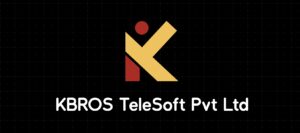A high-powered Department of Telecom (DoT) committee has recommended that only three GSM (one slot reserved for state-owned BSNL/MTNL) and two CDMA operators be allowed to offer 3G services in any given circle.
It has further proposed to double the base price for auction of 3G spectrum to Rs 2,800 crore per player on a pan-India level, compared to about Rs 1,400 crore suggested by Trai. The telecom regulator had proposed allowing up to five GSM players (without any reservation) in the 3G space.
The new base price for 3G spectrum as recommended by the DoT panel will be Rs 160 crore ($40 million) for Delhi, Mumbai and other category ‘A’ circles; Rs 80 crore ($20 million) for Chennai, Kolkata and category ‘B’ Circles; and Rs 30 crore ($7.5 million) for category ‘C’ circles—which add up to Rs 2,800 crore for an all-India licence.
The committee, set up to examine Trai’s recommendations on 3G spectrum allocation and pricing, has also ruled out M&As in the 3G space for the first five years after the rollout of this service to ‘permit adequate competition and prevent hoarding of spectrum by any operator’. In the case of GSM operators, the second and third bidder, including the PSU, must match the price offered by the highest bidder.
The two CDMA operators, which will operate on a different frequency, will also have to match the price offered by the highest GSM bidder. DoT has justified the move to double the base auction price on the grounds that it has also recommended doubling the 3G spectrum to be allotted to each player.
Trai had said each player be given only 2×5 MHz of spectrum in the 2.1 GHz band, which is primarily used by GSM players, but the DoT committee has said each player should be given 2×10 units.
On the move to double the spectrum allocation per operator, it said, “Large amount of spectrum with each service provider allows greater spectrum efficiency and flexibility as well as economy in network planning and rollout. Hence, 2×10 Mhz spectrum may be allowed to each of the three service providers initially.â€
The DoT committee said it’s not deviating from Trai’s base price recommendations. “The base price for the 2×10 Mhz spectrum is recommended to be fixed based on Trai’s recommendations. As the committee has recommended doubling the amount of spectrum for each operator, the base price would be double the amount recommended by Trai,†it report, dated June 29, said.
The panel has also made significant changes in the auction methodology recommended by Trai. The regulator had suggested that all players be subject to an e-auction for spectrum in the 2.1 GHz band, and no reservation be offered to state-owned players. It had said the top five players must be shortlisted, with the third, fourth and fifth highest bidders mandatorily paying the price quoted by the second-highest bidder.
However, the DoT committee report states, “All eligible players, excluding BSNL and MTNL, may bid for 2×10 MHz spectrum. The highest two bidders will be selected, and all three players, which will include the state-owned operator, shall pay the same spectrum charge as the highest bidder.â€
For CDMA operators, Trai had suggested that the two operators be provided with one block of spectrum each, where they are given 2×1.25 MHz in the 800 MHz band at a price quoted by the second highest bidder in the 2.1 GHz space. The DoT committee, while retaining the framework of Trai’s recommendations, has said both CDMA players must match the price paid by the highest GSM bidder.
Trai had also recommended that one CDMA player could be allocated additional 3G spectrum in the 400 MHz frequency through a bidding process, but the DoT committee has not endorsed this proposal on the grounds that it is unlikely that spectrum in this frequency will be freed up.
Globally, 2.1 GHz frequency is used by GSM players to offer 3G services. However, it’s technically possible for CDMA operators also to offer 3G in this band. “Since it is a massive challenge for CDMA players to source network and equipment in the 2.1 GHz band, they are unlikely to bid for this frequency,†said an industry expert.
However, if Reliance Communications or Tata Teleservices were to bid and win 3G spectrum in 2.1 GHz frequency, then as per the DoT committee’s report, only one private GSM operator will get 3G spectrum in this frequency. The other significant change from Trai’s recommendations relates to the additional spectrum charge for 3G services.
While Trai had said operators be charged 1% of their total revenues as additional spectrum fee from the second year of 3G launch, the DoT committee has recommended that service providers be charged 0.5% of their total revenues as additional 3G fee for the first three years and 1% from the fourth year onwards.
